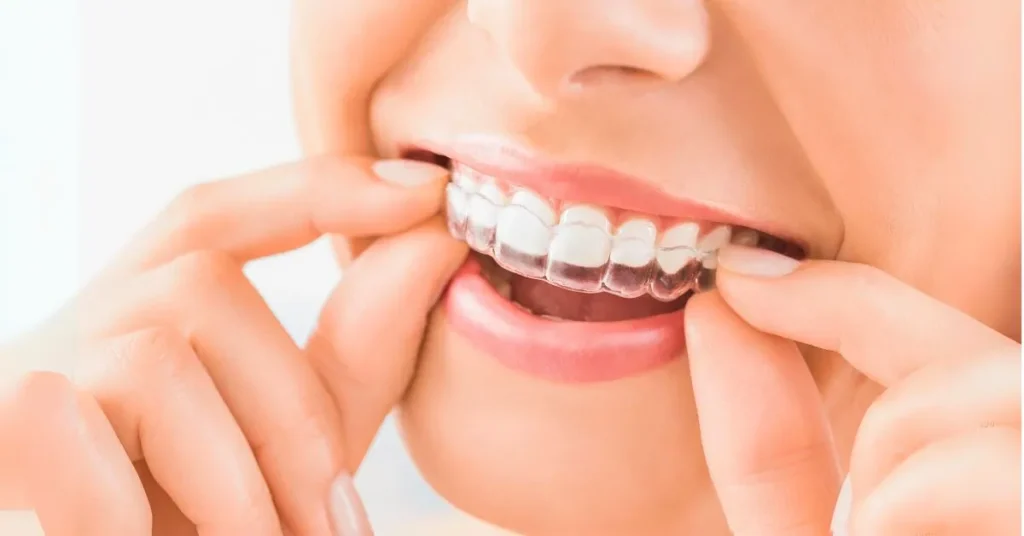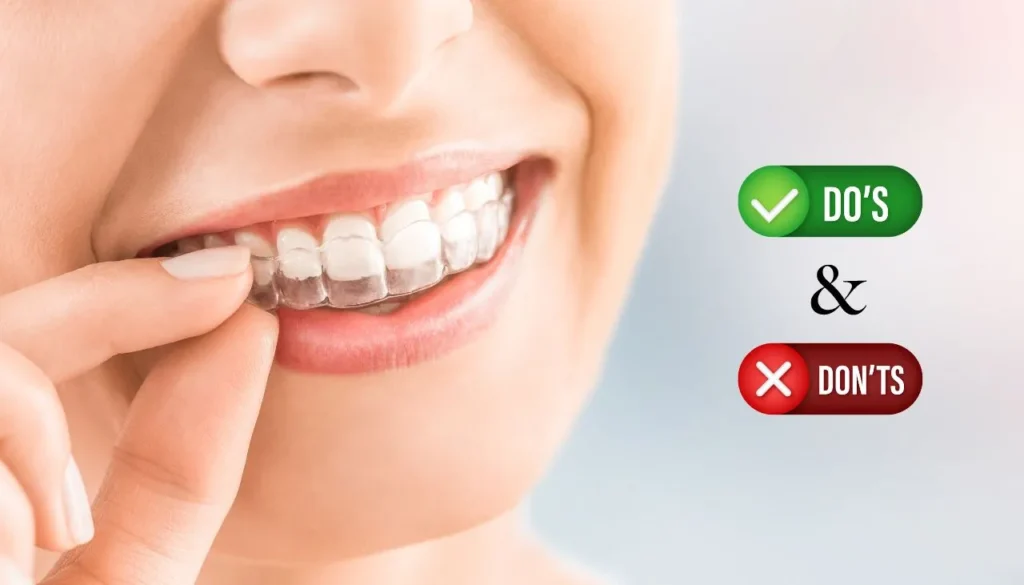Underbite is an atypical dental condition in which the lower teeth protrude (stick out) beyond the upper teeth. Similar to mild overjet or gap teeth, this teeth misalignment may also not require treatment. However, severe underbite is a matter of concern and needs proper medical management.
In normal teeth alignment, your front teeth should extend slightly beyond your lower front teeth. This positioning allows the molars (back teeth) on your upper and lower jaw to meet when you close your mouth.
Exploring Underbite
Medically termed class III malocclusion (teeth misalignment), underbite is a rare dental condition that often occurs in 5-10% of people worldwide.
In mild cases, people do not even notice if they have an underbite, while a severe underbite can affect one’s smile and mental health and even cause sleep apnea.
Not all underbites are the same; there are different levels. In a mild case, people can’t detect it from the outside. In severe cases, the jaw protrudes or expands outward so far that it can be noticeable to others.
Its Impact on Dental Health
Underbites are more than just a basic cosmetic issue. They can cause problems with your teeth and jaw. In severe cases, you might even have trouble speaking properly. An underbite can also cause wear and tear on your front teeth, making them more prone to chipping or breakage. You might also find difficulty chewing food when your jaw isn’t aligned properly.
Symptoms of Underbite
1. Misalignment of Lower Jaw and Teeth
In moderate to severe underbite issues, the lower jaw and teeth are not aligned properly, preventing molar teeth from touching when the mouth is closed. This misalignment is responsible for many of the issues we will discuss here.
2. Difficulty Chewing or Speaking
The patient may find it difficult to chew or bite food properly. The condition can also cause speech impairment to some extent, causing mispronunciation in some words.
3. Temporomandibular Joint (TMJ) Pain
Underbite can cause problems with your temporomandibular joint. This is the hinge that connects your skull to your jaw. In this condition, the joint may be locked in one position. This is a painful situation.
4. Sleep apnea
Underbite or several other malocclusions can affect a patient’s sleep as the patient can not breathe normally during sleep. Sleep apnea is common with underbite.
5. Bad breath
Again, a commonly seen symptom of underbite is a bacterial infection that develops in the mouth. This can cause bad breath.
6. Facial Aesthetic Changes
Underbite affects a person’s facial aesthetic, which is a major concern for several people. In moderate to severe cases, this causes low self-esteem, and people with underbite may think twice before smiling or talking properly in front of others.
Causes of Underbite
1. Genetics and Hereditary Factors
The shape and size of your jaw and teeth, how they developed over time, and how they are connected to the skull are largely inherited from your parents or other members of your clan or family. If someone in your family, including you, has an underbite, it’s likely a genetic condition.
2. Injury
Trauma or injury to your jaw can cause it to be misaligned and lead to an underbite. Also, there are some cases where, after any accident or trauma, the treatment of correcting the jaw injury might not always work. If your jaw doesn’t heal right, this can cause an underbite.
3. Tumour
The growth of a tumour can shift or misalign your jaw. This can lead to an underbite.
4. Childhood Habits
Extended behaviours like sucking the thumb, using a pacifier, sucking pencils and bottle feeding can cause the jaw to change shape. These common habits of children do not often cause any issues if done in moderation.
Diagnosis and Assessment
During the initial appointment, your dentist will physically examine your dental health. Also, X-rays can be done to pinpoint the exact spots where your teeth are misaligned. Based on this analysis, the treatment process will be taken further.
Treatment Options for Underbite
1. Orthodontic Solutions
Orthodontic devices (braces) are the most conventional option for treating an underbite. Metal braces, which are fixed onto teeth and gradually move them into alignment, are mostly used in such scenarios.
Also, there are clear aligners or invisible braces that blend in naturally with your appearance. Clear aligners like i3Dliner are comfortable, discreet, and very convenient to use, thanks to their lightweight but sturdy material.
After the treatment with braces, you may need to wear a retainer. Retainer holds your teeth in position after you get your braces removed. You may need braces on all your teeth or only those affected by your underbite.
2. Orthognathic Surgery
Surgery to correct jaw misalignment is more common in adults than in children. In case you have a severe underbite, you may need reconstructive surgery to align your bite if other options haven’t worked.
3. Functional Appliances
For children and teens with a developing underbite, functional appliances such as bite jumpers, twin blocks, or Herbst appliances can help guide jaw development into proper alignment. These removable or fixed appliances apply gentle pressure to encourage the lower jaw to move back and the upper jaw to move forward. This treatment method will be helpful in cases where the underbite of a young patient is developing.
4. Growth modification devices
These appliances are mostly effective for children, an age group whose mouths are still developing and where the scopes of improvement are high.
- Palate expanders: Palate expanders fit into the roof of your child’s mouth and gradually widen their top jaw to align more fully with their lower jaw.
- A chin cap is a headgear with a chin strap that prevents your child’s jaw from jutting forward.
- Reverse pull headgear attaches to your child’s upper jaw and pulls it forward.
Also Read
Prevention and Management
1. Early Intervention for Childhood Habits
- Discouraging your child from thumb-sucking after age
- Discouraging your child from pacifier use on or just passing age
- Visit a doctor if you see any abnormalities in your child’s dental growth
2. Proper Oral Hygiene Practices
Encourage good oral hygiene practices at home and try to make it mandatory for all, including you! Brushing your teeth twice a day with a soft-bristled brush and good-quality toothpaste, followed by flossing and using an antibacterial mouthwash, are dentist-recommended oral practices.
3. Regular Dental Check-ups and Cleanings
Also, for better dental health and to be more stress-free, you can visit your dentist twice a year. You should encourage your family and friends to do the same. Dental checkups and cleanings are vital for keeping your dental health intact. Remember, a healthy smile signifies a healthy you.
Final Verdict
Depending on the severity of your underbite, the misalignment can lead to unpleasant symptoms like jaw pain and difficulty eating and speaking. It can increase your risk of dental problems and conditions like TMJ disorders. Depending on its severity, an underbite may make you self-conscious about your appearance.
Your teeth have a significant impact on your overall health and well-being. So, it is advised that you should not overlook any abnormalities or ill symptoms. Take good care of your dental health, and for any support and care, consult with i3DLiner orthodontist.
FAQs
Mild underbites are sometimes unnoticeable, while a severe underbite can cause your jaw to stick out noticeably. The misalignment can cause symptoms, including trouble opening or closing your mouth, discomfort or pain while speaking or chewing, etc.
If the treatment process includes metal braces, the treatment period requires 1 to 2 years. Similarly, clear aligners can treat an underbite between 6 to 15 months. In severe cases, the healing period may take weeks to months if the condition needs surgery. The treatment type varies from condition to condition.
Depending on the severity of your underbite, the misalignment can lead to uncomfortable symptoms like jaw pain and difficulty eating and speaking. It can increase your risk of dental problems and conditions like TMJ disorders.
A moderate to severe underbite can affect your speech as well as chewing and biting food due to the misalignment of your jaw.
Changes in habits and behaviours, such as thumbsucking, using a pacifier, tongue thrusting, etc, need to be checked on or before age 3. For special cases, medical help should be taken.
Underbite can be corrected in most patients by using metal braces or clear aligners. For children, several other methods and devices are available to cure an underbite.

